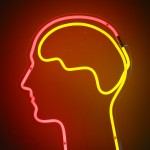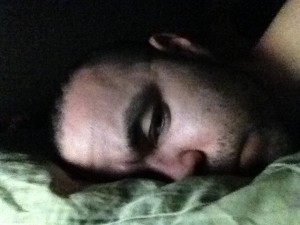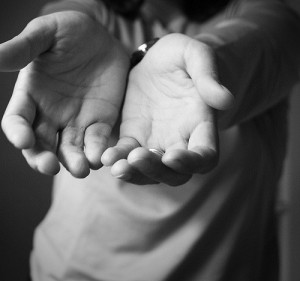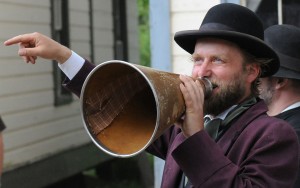
Traumatic Brain Injury has been associated with increased occurrence of depression (Gertler et al, 2015). Traumatic Brain Injury results from damage to the brain by external forces, such as direct impact or rapid acceleration; consequences of a traumatic brain injury may be temporary or permanent and can lead to problems with cognition, emotion and behaviour (Maas, Stocchetti, & Bullock, 2008).
The main feature of depression is either a depressed mood or loss of interest and pleasure in usual activities, or both, consistently for a two week period. Depression can present as a major risk factor for suicide after Traumatic Brain Injury.
A recent Cochrane systematic review aimed to measure “the effectiveness of non-pharmacological interventions for depression in adults and children with Traumatic Brain Injury at reducing the diagnosis and severity of symptoms of depression.”

People who experience traumatic brain injury are at an increased risk of depression.
Methods
The Cochrane Injuries Group searched eight electronic databases for randomised controlled trials (RCTs) of non-pharmacological interventions for depression in adults and children who had a Traumatic Brain Injury. For inclusion in the review, study participants had to fulfil the following criteria:
- A history of Traumatic Brain Injury due to external forces; samples that included participants with non-traumatically acquired brain injury, such as stroke, were also included if the data allowed for separate analysis of those with Traumatic Brain Injury
- Fulfilment of diagnostic criteria for an applicable mood disorder, such as major depressive disorder or adjustment disorder with depressive mood, based on DSM or ICD criteria
- Presenting with clinically significant depressive symptoms based on standardised measures
The primary outcome was “the presence or remission of depressive disorders, as determined by the use of accepted diagnostic criteria (e.g. DSM-IV or ICD-10), by the use of a standardised structured interview based on such criteria (e.g. Structured Clinical Interview for the DSM Disorders), or the results of validated self- or observer-rated questionnaires of depressive symptoms.”
The secondary outcomes were:
- Neuropsychological functioning, psychosocial adjustment, everyday functioning, quality of life, and participation
- Medication and healthcare service usage
- Treatment compliance, based on the proportion of withdrawals from intervention
- The occurrence of suicide or self-harm
- Any adverse effects of the intervention.
Results
Six studies were included in the review. Three of the studies were carried out in the USA (Ashman, Cantor, Tsaousides, Spielman, & Gordon, 2014; Ashman & Tsaousides, 2012; Fann et al., 2015; Hoffman et al., 2010), one in China (He, Yu, Yang, & Yang, 2004), one in Canada (Bedard et al., 2014) and one in Australia (Simpson, Tate, Whiting, & Cotter, 2011). Participants in all studies were over 18 years of age.
Summary of interventions in included studies
| Study | N Participants | Intervention | Duration of Treatment | Outcome measure |
| Ashman 2014 (Ashman et al., 2014; Ashman & Tsaousides, 2012) | 77
(43 completed) |
Cognitive Behaviour Therapy (CBT) or Supportive Psychotherapy (SPT) | 16 sessions over 3 months | Structured Clinical Interview for DSM-IV
Beck Depression Inventory – second edition (BDI-II) |
| Bedard 2013 (Bedard et al., 2014) | 105
(76 completed) |
Mindfulness-based cognitive therapy (MBCT) modified to suit those with TBI | 10 weekly session plus recommended daily meditation | BDI-II |
| Fann 2015 (Fann et al., 2015) | 100
(86 with follow up data) |
CBT in person or by telephone | 8 to 12 weekly sessions | Hamilton Depression Rating Scale (HAMD-17) |
| He 2004 (He et al., 2004) | 64
(63 completed) |
Repetitive transcranial magnetic stimulation (rTMS) | 4 treatment sessions each lasting 5 days, with an interval of 2 days between sessions | HAMD |
| Hoffman 2010 (Hoffman et al., 2010) | 80
(76 completed) |
Supervised exercise training | 10 weekly sessions, plus a home program | BDI |
| Simpson 2011 (Simpson et al., 2011) | 17
(16 completed) |
Group-based CBT | 10 weekly sessions | Hospital Anxiety and Depression Scale (HADS) |
Primary outcomes
The review reported on four comparative analyses:
- CBT, or a variant of CBT, vs waiting list; included a meta-analysis of three studies (Bedard, Fann, Simpson). There was no indication of a difference in depression symptoms attributable to the intervention (standardised mean difference (SMD) -0.14, 95% CI -0.47 to 0.19; Z = 0.83, p = .41).
- CBT to SPT; based on one study (Ashman), the difference in depression remission was not statistically supported (RR 0.76; 95% CI 0.58 to 1.00; Z = 1.96; P = 0.05) nor was the difference between groups in depression symptoms (SMD -0.09; 95% CI -0.65 to 0.48; Z = 0.30; P = 0.77).
- rTMS plus tricyclic antidepressants (TCA) to TCA; based on one study (He). There was a reduction in depression symptoms seen in the rTMS plus TCA group, (0.84; 95% CI -1.36 to -0.32; Z = 3.19; P = 0.001), however the difference was not considered to be clinically relevant. This was the only study to report adverse effects as two participants reported transient tinnitus with spontaneous remission.
- Supervised exercise and exercise as usual; based on a single study (Hoffman). There was no difference in depression symptoms between groups following the intervention (SMD -0.43; 95% CI -0.88 to 0.03; Z = 1.84; P = 0.07).
Secondary outcomes
Secondary outcomes were reported for each individual study. There was no difference in treatment compliance between intervention and comparison group in each study. One study (He et al., 2004) reported adverse effects as two participants reported transient tinnitus with spontaneous remission.
Most other secondary outcomes showed no difference between intervention and treatment groups.

There is insufficient evidence to recommend any particular non-pharmacological treatment for depression in traumatic brain injury.
Strengths and limitations
Some studies were not included because of the narrow focus of the review. The primary outcome of these studies was quality of life or psychological well-being and as such did not require included participants to have a diagnosis of depression or a particular cut-off score on a depression scale. While these may have been of interest, this is not necessarily a limitation as it allowed the authors to concentrate on a clinically relevant treatment effect for depression.
The authors found the quality of evidence to be low or very low in all comparisons, mainly due to the lack of blinding participants and personnel to the treatment. This lack of blinding could have affected the self-report depression symptom scales in particular. The authors suggested some suitable placebo treatments such as sham rTMS to imitate real TMS or a social contact intervention to compare to CBT.
Conclusion
The paucity of studies included makes it difficult to draw any firm conclusions. There was no strong evidence to support any of the interventions explored here. All of the studies are very recent which suggests there may be an increase in this kind of research.
The authors point to some implications for future research in this area, such as the careful consideration of what will be meaningful to the individual participants and the question of the suitability of RCT design for CBT interventions.

The review calls for future RCTs that compare active interventions with controls that replicate the effect of the attention given to participants during an active treatment.
Links
Primary paper
Gertler P, Tate RL, Cameron ID. (2015) Non-pharmacological interventions for depression in adults and children with traumatic brain injury. Cochrane Database of Systematic Reviews 2015, Issue 12. Art. No.: CD009871. DOI: 10.1002/14651858.CD009871.pub2.
Other references
Ashman, T., Cantor, J. B., Tsaousides, T., Spielman, L., & Gordon, W. (2014). Comparison of cognitive behavioral therapy and supportive psychotherapy for the treatment of depression following traumatic brain injury: A randomized controlled trial. Journal of Head Trauma Rehabilitation, 29(6), 467–478. [PubMed abstract]
Ashman, T., & Tsaousides, T. (2012). Cognitive behavioral therapy for depression following traumatic brain injury: FINDINGS of a randomized controlled trial. Brain Impairment. Cambridge University Press.
Bedard, M., Felteau, M., Marshall, S., Cullen, N., Gibbons, C., Dubois, S., … Moustgaard, A. (2014). Mindfulness-based cognitive therapy reduces symptoms of depression in people with a traumatic brain injury: results from a randomized controlled trial. J Head Trauma Rehabil, 29(4), E13–22. [PubMed abstract]
Fann, J. R., Bombardier, C. H., Vannoy, S., Dyer, J., Ludman, E., Dikmen, S., … Temkin, N. (2015). Telephone and in-person cognitive behavioral therapy for major depression after traumatic brain injury: a randomized controlled trial. Journal of Neurotrauma, 32(1), 45–57. [PubMed abstract]
He, C. S., Yu, Q., Yang, D. J., & Yang, M. (2004). Interventional effects of low-frequency repetitive transcranial magnetic stimulation on patients with depression after traumatic brain injury. Chinese Journal of Clinical Rehabilitation, 8, 6044–6045.
Hoffman, J. M., Bell, K. R., Powell, J. M., Behr, J., Dunn, E. C., Dikmen, S., & Bombardier, C. H. (2010). A randomized controlled trial of exercise to improve mood after traumatic brain injury. Physical Medicine and Rehabilitation, 2(10), 911–919. [PubMed abstract]
Maas, A. I. R., Stocchetti, N., & Bullock, R. (2008). Moderate and severe traumatic brain injury in adults. Lancet Neurology, 7 (August), 728 – 741. [PubMed abstract]
Simpson, G. K., Tate, R. L., Whiting, D. L., & Cotter, R. E. (2011). Suicide prevention after traumatic brain injury: a randomized controlled trial of a program for the psychological treatment of hopelessness. The Journal of Head Trauma Rehabilitation, 26(4), 290–300. [PubMed abstract]

Treatment for depression in traumatic brain injury: Cochrane find no evidence… https://t.co/VJ1irQEQOe #MentalHealth https://t.co/v5togIIYQd
Today @Nelllor_ on non-pharmacological interventions for depression in adults & children w traumatic brain injury https://t.co/MBiZ8g3Xud
Cochrane review finds insufficient evidence for non-drug treatments for depression in traumatic brain injury https://t.co/MBiZ8g3Xud
Treatment for #depression in #traumaticbraininjury: Cochrane find no #evidence for non-pharmacological interventions https://t.co/cGptkQOdLP
[…] 1The Mental Health Elf: Treatment for depression in traumatic brain injury […]
People who experience traumatic brain injury are at an increased risk of depression https://t.co/MBiZ8g3Xud
Traumatic brain injury, depression & intervention efficacy
via @Mental_Elf
https://t.co/1SPmHfBjVr
RT @Mental_Elf: Systematic review of CBT, MBCT, rTMS & exercise for depression in traumatic brain injury https://t.co/MBiZ8glySN #TBI #Coch…
Don’t miss: Treatment for depression in traumatic brain injury https://t.co/MBiZ8glySN #EBP